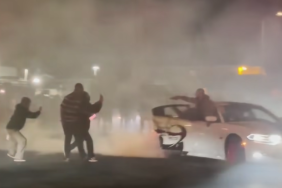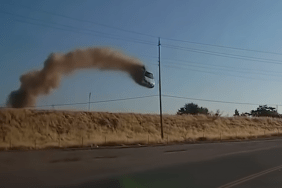This week’s and next week’s installments of The Series Project are humbly dedicated to Paul Walker (1973- 2013). A handsome bloke, a decent guy, and a charming actor.
The Fast & Furious films are, in my estimation, an unlikely phenomenon. There doesn’t seem to be any discernible reason that a 2001 racecar-themed ripoff of Point Break from a decade earlier should become the jumping-off point for a six-film series. But The Fast and the Furious, starring an appealing rainbow coalition of sexy actors and actresses, and tapping into a new aesthetic zeitgeist of neon-lined ultra-expensive car culture, was one of the most profitable movies of the entire decade (on a $38 million budget, it has made over $144 million to date. And that’s just the first film).
As sequels began to appear, the movies got bigger and more baffling. More and more characters entered this myth until the final two films wherein almost all of the major players from previous films began to appear in gigantic action spectaculars. A modest crime flick mushroomed into one of the most thrilling string of honest-to-goodness B-movies that the 2000s got to see. As of this writing, the seventh film in the series has currently been put on hold following the death of series leading man Paul Walker (in all of the films but one), and major re-writes have been discussed to continue production. There has even been some talk of abandoning the series altogether.
Seeing the cluster of action actors involved in this series, however, it seems like not only will it continue, but it looks like it will only get bigger and bigger. Frankly, I encourage every over-the-top piece of goofiness this series can crack off. I’ve mentioned in The Series Project before the “Rule of Part Threes.” In brief: First film = good. Second film = bigger. Third film = so much bigger its ridiculous OR taken in a “new direction.”
As we’ll see in this week’s article covering the first three films in the Furious franchise, the third film did take the series in a new direction, but the filmmakers then opted to go back to the “bigger and more ridiculous” mold, and just keep pushing. I’m glad they did. There is so much power behind a good clunky action flick, and the makers of this series seem to know that.
But to the humble beginnings.
The Fast and the Furious (dir. Rob L. Cohen, 2001)

The story is identical to Point Break. Seriously, almost beat-for-beat. Paul Walker plays a Federal agent named Brian O’Conner who has been enlisted to go undercover and infiltrate an underground ring of extreme street racing enthusiasts who may be responsible for robbing delivery trucks on the highway. He eventually ends up forming a close regard with the ringleader, Dom Toretto (Vin Diesel) and falls in love with his sister (Jordanna Brewster). It’s a serviceable story, and one we know works. And while Point Break is something of a cult hit, the story may not be well-known to many people, so a rehash is fine.
But the story is not why we come to The Fast and the Furious. Indeed, the stories will become more and more convoluted as the series progresses. We’ve come for several things that the flick does impeccably.
One: Car racing. This film sparked a new aesthetic in the way car chases are filmed, and how movie cars look. No longer are they expensive off-the-rack Italian racecars for the rich. Now movie race cars are color-coded, customized superhero vehicles with neon lighting, nitrous oxide tanks, and a much more attainable street-level appeal. These are not the fantasy cars James Bond drives. These are a gearhead’s wet dream. Objects that look like the viewers could, with the right resources, actually make. They are youthful and more fun. They are to be driven hot and immediately, not cool and gracefully. You do not wear a suit in these cars. You wear a tank top, a miniskirt, and jewelry.

Two: an appealing underground car culture. The people who drive these cars belong to a new kind of world not seen in movies before, and seen in dozens of imitation flicks since. Street racing – moneyed by high-stakes gambling – is a colorful and energetic world that is sexy and haphazard. Booty girls wander around the cars, and drivers take pride in their custom-built engines. There are races and they are illegal, but the racers seem like they’re having a party.
Three: multiculturalism. Paul Walker is pretty much the only white guy in sight throughout the series (although this first film has a tragic wimp played by the very good Chad Lindberg and Walker’s stern boss is played by Ted Levine). The bulk of characters from these movies are Latino/a, African American, or Asian. How refreshing for every audience member of every race to see an action film that’s not entirely about white people. And the character’s racial backgrounds are rarely mentioned. They’re just allowed to have their own culture. It’s a melting pot of action heroes, and they’re all appealing and very sexy.

Four: sex. Vin Diesel has an awesome physique. He’s dating Letty (Michelle Rodriguez) who is very hot. Paul Walker is gorgeous. Jordana Brewster is amazingly pretty. There are hot background bikini-type girls in this film, although the quotient will rise in sequels.
The Fast and the Furious was just a magical recipe that seems to have come together right. Looking at the film objectively, from a story standpoint, it has little to offer beyond efficient exploitation thrills. But looking at the film as a whole, it struck a chord. I can understand why it was a hit, and can even begin to fathom why it became the six-film phenomenon that it did.

A good series needs myth to survive in quality. The next film begins to feel mythic. Starting with its wonderfully dumbass title…






